
General Guide | Level Guide | Challenger Guide | Foraging Guide | Predator Guide | Rabbit Selling Guide | Kindling Guide | Genetics Guide | Character Contest Guide | Name Generator | Seeker Guide | Snowflake Guide | Shrooms Guide | Category Guide | HTML Guide | Crystal Cave Guide | Help Forum
Warrenz uses realistic genetics to determine a rabbit's color. Genetics come into play when kindling or applying DNA. If you
plan on doing either of those things, it can be helpful to learn a bit about genetics.
You can also read up on resources about the genetics of real life rabbits. Warrenz follows most of the same rules, although this guide will specify when it doesn't.
A rabbit can have up to 2 different alleles per gene. 2 different alleles will vie for dominance. The dominant allele gets expressed in the rabbit's coat color while the recessive one is 'carried' and remains hidden.
There is another type of dominance called co-dominance, which means that 2 different alleles are expressed at the same time.
In Warrenz, fantasy genes will always be dominant, so if you are breeding for realism, you won't encounter surprise fantasy on your kits.
Below is every gene on Warrenz, and all of the available alleles for each gene (in order from most to least dominant).
A Gene
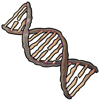
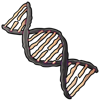
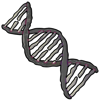
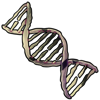
Introduction
The A Gene is what determines whether or not there is a 'color pattern' on rabbits with Full Extension (from the E Gene).
Below are all of the possible alleles in the A Gene.
Agouti
Agouti is the most common pattern there is and plays a great role with the mixing and matching of other genes.
This marking is brownish-orangeish masking the base color, so while it would seem a rabbit is brown or more orange-y, the base of the color will be either black or chocolate (More on the B Gene)
Depending on other genes (C Gene, E Gene), the color of the agouti marking may vary from brown-ish to grey-ish or be able to cover all the rabbit entirely.
Agouti is a usually soft marking covering most of the body of the rabbit leaving the back, some zones around the face and the tip of ears of whatever the base color of the rabbit is.
Agouti rabbits can also exhibit a tan pattern covering the inner ears, around the eyes, nostrills, neck, belly, legs and underside of the tail.
The presence of tan markings, as well as tone and hue is determined by hidden modifiers.
Agouti is the most dominant of the real life alleles.
Tan
Tan is the second most common pattern, it gives rabbits a tan pattern covering the inner ears, around the eyes, nostrills, neck, belly, legs and underside of the tail.
The color of the tan pattern itself is set by the C Gene while the color of the base is set by the B Gene.
The back of the neck is always more reddish-orange than other areas of the pattern. In some poses, it is more visible than others.
Nothing on this pattern alone is dictated by hidden modifiers. It doesn't have any variations whatsoever although the Base Color tone can be changed with hidden modifiers.
It is recessive over Agouti but Dominant over Self.
Self
Self is the easiest of the patterns, but also the most recessive of them all.
Self completely removes all patterns a rabbit may have, leaving the base color being the sole color on a rabbit.
The base color is determined by the B Gene
Nothing on the pattern alone is dictated by hidden modifiers., although the Base Color tone is.
As mentioned, Self is the most recessive of the alleles on this Gene.
Wild
Wild currently removes the agouti layer, leaving a solid coat pattern.
We are currently seeing what to do with this gene as it doesnt really do much after the image update.
B Gene



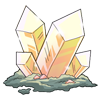
Introduction
The B Gene determines a rabbit's 'base' color. In real life, rabbits can be either Black or Chocolate, but Warrenz has fantasy base colors like Yellow and Red.
Black
Black is the standard color rabbits come in. Mixed with Dilute, on the D pair, will give you Blue, or grey for the layman.
The brightness or darkness of the black is decided by hidden modifiers.
Black is dominant over chocolate, but recessive over the fantasy base colors.
Chocolate
Chocolate is the only other realistic base color there is. Mixed with Dilute, on the D pair will give you a Lilac colored base, a softer version of Chocolate.
The brightness or darkness of the brown is decided by hidden modifiers.
Chocolate is recessive over all other alleles.
Colorful
The Colorful gene can give a rabbit's base any color in the spectrum, from red to blue to green or purple.
The hue and brightness is decided based on hidden modifiers, instead of the color being based in pure genetics like on Set colors.
To get a rabbit to have the clr allele, you'd have to use The Rainbow Crystal.
This gene is dominant over set colors.
Set Colors
These 3 alleles dictate what the base color is depending on how they mix.
There are only 3 alleles, Red, Ywl and Blu*, but these colors can be mixed to make other colors as follows:
Red + Yellow = Orenge**
Red + Blu = Purple
Yellow + Blu = Green
So if a rabbit has redblu on the B gene, they will have a purple base.
Double copies of the same allele will have no affect on the color, so for example, if a rabbit is redred, the base will be red.
Colored Crystals are used to give rabbits specific colors.
The tone of the base color, whether more dark or more bright is decided by hidden modifiers
These allelels are recessive over Colorful.
*Note: Blu is an intentional misspelling as Blue is a real-life color related to the D gene
**Note: Orenge is an intentional misspelling as Orange is a real-life color related to the E gene
Full colorfuls and Fades
The effect of fullcolorful and fade can be visible on this Gene, for more info about Fades and Fullcolorfuls, go to their section.
C Gene



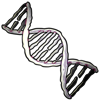

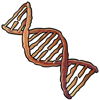

Introduction
The C Gene has many interesting effects depending on the allele and is often referred to as the 'color' gene.
It rules the secondary color of a rabbit, the base color being the B Gene, as well as having some other features.
This secondary color is found in the agouti and tan layers.
Note that while "Colorful" is a descriptor for fantasy colored rabbits in general, we will be addressing them as clr (From the B Gene) and cclr (From the C Gene)
Full Color
Full Color, as the name implies, keeps the secondary color its full color, which is a brown-ish orange-ish.
Its tone and saturation are dictated by hidden modifiers.
Chinchilla
Chinchilla allele removes the saturation from the secondary color, leaving the agouti layer (From the A Gene) in a soft grey color, and the tan and wild markings (From the A Gene) being full white.
It is named after the Chinchilla, an animal with commonly a grey and white coat that rabbits can "borrow" from if they happen to be Chinchilla.
The overall tone of the rabbit is dictated by hidden modifiers.
Shaded
Shaded still retains the brownish-orangeish color of the secondary color, but also lowers its saturation .This allele also leaves the ears, muzzle, legs and tail of the base color (From the B Gene) while tan and wild markings (From the A Gene) get converted into full white.
When paired with Dilute, from the D Gene, the brownish secondary color will turn in to a greyish color.
When paired with Non Extension, from the E Gene, the secondary color will range from off-white to white. In some cases, a rabbit may look like a Californian with brown eyes. This combination is referred to as Sable Point.
For the sake of simplification, we dont have "Seal" colors in Warrenz, instead, the brightness of the color is dictated by hidden modifiers, which can give a Sable rabbit a Seal color.
Himalayan / Californian
The himalayan allele, also known as himi, californian or cali, will tone down the saturation of the secondary coat, similar to a chinchilla, but will also give the rabbit a white coat while leaving the ears, muzzle, tail and legs of the base color (From the B Gene) and pattern (From the A Gene). It will also give the eyes a red tint.
If a Californian is also a BEW, or Blue Eyed White (From the V Gene), it will look like an Albino
This is because the C Gene is dominant over the V Gene.
If we have a BEW rabbit, a white rabbit with blue eyes, and we apply the Californian Layer, it will override the blue eyes with the californian red eyes. The result will be a white rabbit with red eyes without being Albino.
Albino (REW)
The albino or "Ruby Eyed White" allele will give a rabbit a fully white coat and red or ruby eyes, hence the name.
If an Albino is also a BEW, or Blue Eyed White (From the V Gene), it will still look like an Albino
All albino rabbits will look the same, regardless of hidden modifiers.
Wideband
Wideband in real life has its own gene, but for the sake of simplicity, we joined it in the C Gene. In real life, it has more effects on a rabbits coat, but we wanted to make genetics as simple as we could.
Wideband in warrenz only appears on tan and wild rabbits (From the A Gene)
It will appear on wild rabbits regardless of if they have an agouti pattern or not.
It gives the wild and tan markings a deeper red/orange color.
WideChin
Widechin occurs when wideband (w) gets mixed with chinchilla (cchd) and, for the most part, a rabbit will not appear any different than what a normal chinchilla would be, but, wild rabbits (From the A Gene) have a small change to exhibit redder wild markings.
The result is of a wild chinchilla, but with the lighter markings being wideband colored.
WideShade
Similar to WideChin, WideShade occurs when wideband (w) gets mixed with shaded (cchl), and like WideChin, it will only appear on Wild rabbits (From the A Gene) and is also a rare occurence.
The result is of a wild shaded, but with the lighter markings being wideband colored.
Colorful
The Colorful allele on the C Gene is most frequently referred as cclr to avoid confusion with the B Gene Colorful, clr.
Similarly to clr, cclr gives a random color to the secondary color of a rabbit, while also coloring the tan and wild markings of random colors. So it is possible to have a red for the secondary color and a blue for the tan or wild markings.
The Tan and Wild markings will generally be of a softer color than the secondary color.
Bismuth is used to give rabbits cclr.
The tone and hue of the colors, whether more dark or more bright is decided by hidden modifiers.
This allele is the most dominant one.
Full colorfuls and Fades
The effect of fullcolorful and fade can be visible on this Gene, for more info about Fades and Fullcolorfuls, go to their section.
D Gene


Introduction
The D Gene determines the diluted pigmentation of a rabbit's coat color. It doesn't affect white areas such as on Himi, Albino, or Broken nor does it affect colorful rabbits.
All Dilute Rabbits have grey eyes unless they are eyec or vienna (From the V Gene)
Dense
Dense is the dominant allele on this pair, it will make the overall colors of a rabbit bright and vibrant. Blacks are black and Chocolates are Chocolatey.
All Dense rabbits, with a couple of exceptions (like californians and albinos (From the C Gene) or viennas and eyecolors (From the V Gene)) will have brown eyes.
Dilute
Dilute is the recessive allele of the pair, it will make the overall colors of a rabbit more soft and toned down. Blacks will turn into Blue*, also known as grey, and Chocolates will turn into Lilacs.
Dilute also gives rabbits grey eyes (unless they are californians or albinos (From the C Gene) or viennas or eyecolors (From the V Gene))
In rare cases, you may find a Dilute rabbit with a grey eye and a brown eye, this is a rare occurrence known as heterochromia or dichromia.
A rabbit that expresses this phenomena is called a Dichromatic rabbit.
Whether or not a rabbit is Dichromatic depends on hidden modifiers.
*Note: Blue is Diluted Black, whereas Blu is a fantasy color related to the B Gene
E Gene



Introduction
The E Gene determines whether or not the base color shows on a rabbit or not and how much.
Full Extension
This is the most dominant gene, and the most common.
Full Extension makes it so the base color shows on the entirety of the coat.
There is not much else here.
Non Extension
Non extension will remove the base color. In case of agoutis, they will be Orange, exlusively, no matter the base color.
On Tans, Selfs and Wilds, it will leave the points of the base color (Ears, muzzle, legs and tail). The "secondary" color's saturation (Grey or brown) will be deicided by the C Gene
When paired with Shaded, from the C Gene, the secondary color will range from off-white to white. In some cases, a rabbit may look like a Californian with brown eyes. This combination is referred to as Sable Point.
The tone of the color (but not the color itself) will be determined by hidden modifiers.
Harlequin
This section is outdated.
Harlequin is an interesting allele, also called "Japanese".
In real life, Harlequin can cause a patchwork pattern on solid-colored rabbits (no spots) and cause a spot, speckle, or blotch-like pattern on broken ones (a broken harlequin is called a tricolor). On Warrenz, harlequin works the same way, but additionally allows for the patchwork patterns on tricolor to add extra variation in the game.
The ej gene will add a harlequin pattern to a rabbit. This pattern gets cut out of the colored layered (including otter, wild, and agouti layers), revealing the base layer underneathe. Depending on whether you have ejej, eje, or ejE will change the expression of the A and E locus genes (which we'll explain next).
In addition to the harlequin pattern eje causes, there are three different ways harlequin can alter the expression of the A and E locus. Either ejej, eje, or ejE (Harlequine).
The well-known and simple expression is ejej (two copies of harlequin). ejej force rabbits to express as non extension agouti, even though they may be neither non extension nor agouti. Even a self (aa) or tan (at_) patterned rabbit will have the color of non extension agouti if they have two copies of the harlequin gene.
When there is a single copy of ej and a copy of e (non extension), the colored parts of the rabbit will mimic non extension, also causing torting on self or tan pattern like a non extension self would (there is no torting with ejej because ejej forced a pseudo agouti expression, eje does NOT force the agouti look).
Harlequin pattern can be combined with different genes in the C locus, causing colors like Magpie.
The pattern is decided by hidden modifiers.
NOTE: Harlequin pattern is not available in rabbits below ID #573337.
Harlequine
This section is outdated.
When there is a copy of harlequin (ej) and full extension (E), you get a harlequinized rabbit. ejE mimics full extension expressions, turning a chestnut into a harlequinized chestnut (simply a chestnut with harlequin pattern) or making harlequinized otter. This can also result in no harlequin pattern on selfs (because full extension self has no color layers for the harlequin pattern to cut into).
The pattern is decided by hidden modifiers.
NOTE: Harlequin pattern is not available in rabbits below ID #573337.
En Gene


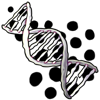
Introduction
The En Gene determines whether or not the coat turns white, leaving spots or splotches of the original color.
Solid
Solid is the most common allele although it is, oddly enough, the most recessive one.
Solid has no special features, no white splotches appear on the coat.
Broken
Broken in warrenz is more simple than in real life. Here, broken will leave a rabbits coat white with certain parts being of the original coat.
There are two layers at play on brokens, a perimeter layer and a spot layer.
The perimeter layer is present in almost all rabbits, it covers the underbelly, underside of the tail, legs, chest, jaw, and around the cheek, except for some cheek spots.
This layer makes it so these parts are always white just like in real life.
The second layer, the spot layer, is the layer that gives the broken rabbits their unique spots. These spots are usually seen on the back, around the eyes, cheeks, ears and muzzle, the opposite of the permimeter layer, since the perimeter layer covers the spotted layer.
In come cases, the perimeter layer is not visible, leaving the spotted layer unobstructed and fully visible.
Whether the perimeter layer is visible or not as well as the patterns on the spotted layer are dictated by hidden modifiers.
In real life, co-dominance exists on the broken allele, meaning that, a single copy of En will give you less white, (Broken) and two copies of En will you more white (Charlies).
For simplicity's sake we only have Brokens in Warrenz, there is no co-dominance and whether a rabbit looks more like a Broken or a Charlie depends on hidden modifiers.
English
The allele English doesn't exist in real life, but does on Warrenz as we have the Broken allele simplified.
The English pattern works similar to brokens, except it is more concrete. It consists of two layers, the general layer and the spotted layer.
Like Brokens, these layers will cut out and expose the rest of the rabbit's coat, whatever that may be.
The general layer is a layer that is always visible on English rabbits, it cuts out the ears, around the eyes, cheek spots, muzzle, spine and top of the tail.
The spots layer comes in 4 flavours in each pose and at least one of them is always of the perfect / ideal / Text-book example of the English Pattern.
This ideal pattern has round spots starting small at the shoulder that gradually become bigger and stop at the hind legs.
Both the general layer and the spotted layers are also Special Markings.
V Gene



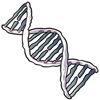
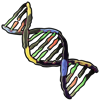
Introduction
The V Gene is similar to the En Gene, covering the rabbit in white, but it is not as complex.
It can also change the eye color of rabbits.
No Vienna
No Vienna is the standard color.
There is no white on the rabbit and the eyes are Brown or Grey (From the D Gene) or Red (From the C Gene)
Dutch
Dutch is an allele that has its own Gene in real life, like Wideband (From the C Gene).
For simplicity’s sake, we put it on the V Gene in Warrenz.
This allele will give a rabbit a white head blaze, also covering the rest of the upper body and the extreme of the feet in white.
Dutch can also give a rabbit blue eyes, depending on hidden modifiers.
When paired with vienna, the vienna markings will be under the dutch layer, and thus, invisible.
Vienna
A single copy of the Vienna allele may give a rabbit white markings and/or blue eyes.
There are 4 possibilities when it comes to the white markings.
A forehead stripe, a nose snip, right paw sock and left paw sock. These four can be shown at the same time along with the blue eyes.
Whether or not there are white markings and / or blue eyes depends on hidden modifiers.
BEW
BEW, or Blue Eyed White, is exactly like Albino (or Ruby Eyed Whites) (From the C Gene), except the eyes are of a blue color.
If a rabbit is BEW and Albino, the color that will express will be the one of an Albino.
If a rabbit is BEW and Californian, the color that will express will be the one of an Albino. This is because the C Gene is dominant over the V Gene.
If we have a BEW rabbit, a white rabbit with blue eyes, and we apply the Californian Layer, it will override the blue eyes with the californian red eyes. The result will be a white rabbit with red eyes without being Albino.
Eyec
Eyec simply changes the eye color to a wide range of colors, similar how clr (From the B Gene) or cclr (From the C Gene) operates.
The iris and the pupils color are decided by hidden modifiers.
Eyec can be combined with vienna and dutch, giving vienna eye colors as well as having a chance of having vienna marks.
In rare cases, you may find an eyec rabbit with different colored eyes, this is a rare occurrence known as heterochromia or dichromia.
A rabbit that expresses this phenomena is called a Dichromatic rabbit.
Whether or not a rabbit is Dichromatic depends on hidden modifiers.
Spirit Markings
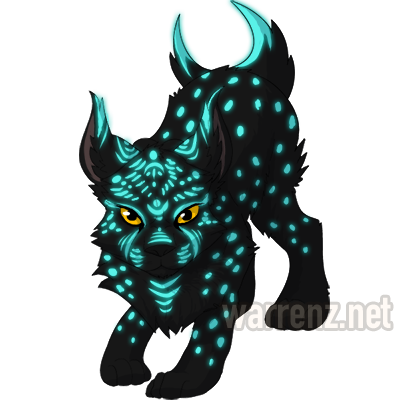


Introduction
Spirit Markings are special, bioluminescent markings granted by the Predator Spirits of the Spirit Tree.
These markings have to be granted and cannot be passed down to offspring, unless you use a Spirit Shroom.
Multiple spirit markings can be shown on a rabbit. Up to 20, wich is the maximum markings a rabbit can have.
The color and pattern are decided by hidden modifiers.
You can change the pattern and color of a spirit marking by using Spirit Cores.
Flasks


Introduction
Flasks are items that change hidden modifiers.
The effects of these cores are not genetic and cannot be passed down to offspring.
Once a flask is used, another can be used to get a different outcome and can be "stacked".
For example a fade flask can make a rabbit have a green and red fade, if another one is used, it will give the rabbit a purple and blue fade.
Fade Flask
The fade core will give either the Base color (From the B Gene) or the Secondary color (From the C Gene) a fade when either of those is colorful.
Because fade can occur in either of the colors, sometimes it will be invisible, for example, if a self rabbit has the fade in the cclr allele (From the C Gene).
This core can be found by foraging in many areas.
Fullcolor Flask
The fullcolor Core will remove the color restrictions on the Base color (From the B Gene) or the Secondary color (From the C Gene), meaning that every color, including black and white can be exhibited in either of the colors.
This core can be found by foraging in many areas.
Stone Markings
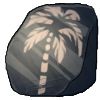
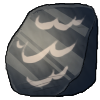
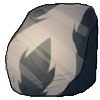
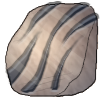
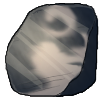
Introduction
The Stone markings are special markings that have a small chance of passing down to offspring.
They come in a variety of patterns and depending on the marking itself, it will take the color of the Base Color (From the B Gene) or the Secondary color (From the C Gene)
Some of these special markings are only obtainable during events, while others can be obtained year-round.
A rabbit can have up to 20 markings.
To use these, you will need to go to the crystal cave.
Stones will have their own guide eventually!
Chimeras
This Guide is slightly outdated. We will be working on updating it as soon as possible.
To update the images

Introduction
Chimeras are a rare occurrence in which there are technically two rabbits in one.
These conditions cannot pass to the future generations.
Chimeras
Chimeras can be found either via exploring and finding rabbits as well as breeding. To increase your odds of getting a chimera by breeding, you can either breed the most kits you can and/or have your rabbits eat Chimera Shrooms at the time of the breeding.
Currently there is only one way to turn a rabbit into a chimera, by using the Chimera Mask, a limited store item. It will stock randomly in the Store.
The Chimera Mask will default a rabbit's chimeric genes to Black Self.
You can change this with split DNA, Split Flakes and Chimera Cores (All that comming... eventually....)
Pose Genetics

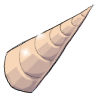
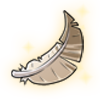
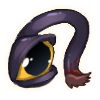

Introduction
Poses can be passed down to the next generation, but not all have the same chances of doing so.
Some poses are rarer to get than others.
Normal Poses
Normal Poses are poses you can freely find in explore, while you are looking for rabbits. When breeding two different poses, each has a 50% chance to pass it down to their kits, per kit.
To change pose, you'll have to use a Shadow of a Doubt.
If a rabbit has stone markings, it may prevent you from changing your rabbits pose to some other normal poses, because one or more of the stone markings are not available for that pose yet.
Similarly, if a rabbit who has stone markings has kits with a rabbit whose pose cannot have that particular stone marking, if the stone marking passes down, the kit's pose will be of the parent that has the marking.
Event Poses
Event Poses are poses you can only find on their respective month either via looking for rabbits or you can get their Transform item via foraging.
You can also purchase their transform item on the Store all year-round.
Event poses are not easy to breed, but if you breed two of the same pose together, you have more chances of having kits of that pose.
If the pose doesn't get inherited, it is probable you can get a hybrid pose.
In General, Event poses are more fantastical looking than normal rabbits.
Hybrid Poses
Hybrid Poses are a special type of pose that can be found on the month of the event-only parent base. For example, an Emo Lionhead (Pose 11) can only be found in the wild in June, which is the month Unicorn Buns appear, since the Lionhead is a Hybrid of Unicorn Buns and normal buns.
The chance to get a hybrid pose via breeding is also kinda limited.
Currently there is only 1 hybrid pose.
Glitchy Rabbits
Introduction
Glitchy rabbits are not a genetic occurrence but a hidden modifier bug.
Sometimes, the saturation slider gets a little too high and visible pixels appear on the body of the rabbit.
These pixels are a-ok to keep on a rabbit unless serious issues happens.
If you are unsure about any graphical bugs or glitches that appear, please fill a report on the bugs forum.
